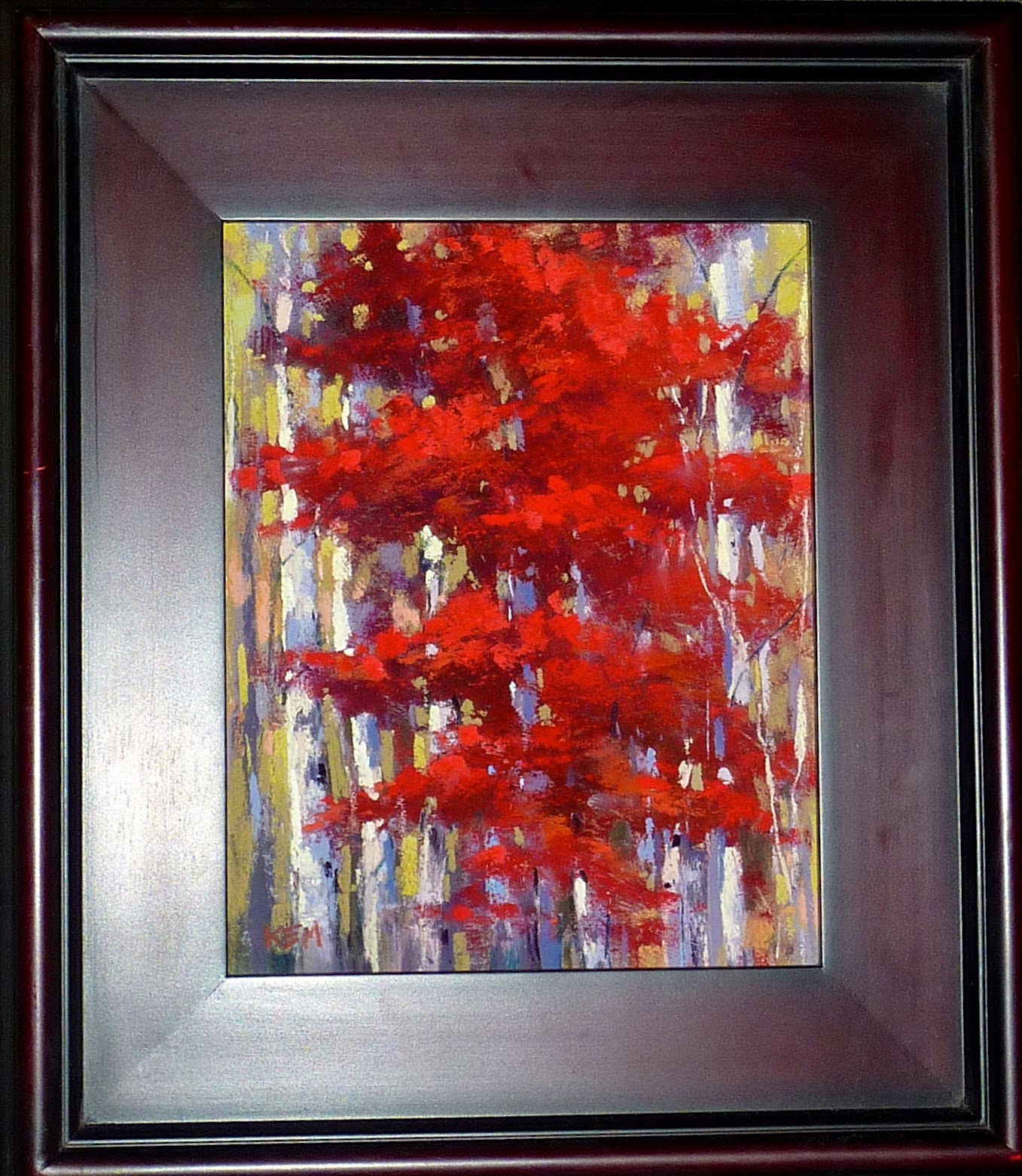 |
| 'Walking Past the Yellow Tree' 12x12 pastel ©Karen Margulis available $175 |
It has been awhile since I shared a step by step demo. I decided to take photos as I painted today and here is the result along with my commentary. Enjoy the step by step description of the making of this yellow tree painting.
STEP ONE: I wanted the star of the painting to be the yellow tree so I chose a square format for an interesting way to frame the tree. I placed the tree off center with the plan to add a smaller bush on the left as a balance. I decided to play with the Art Graf blocks for the underpainting. I applied the color and wet with water. The underpainting was cool but I did manage to cover it all up. (it happens sometimes!)
STEP TWO: I started the painting by reinforcing all of the dark areas....the shadows in the tree, the dark foreground and pathway into the field, the tree trunks.
STEP THREE: Next I added some yellows to the tree and the distant tree line. I wanted to establish the placement of these colors before I put in the sky.I used the pale yellow to carve into the tree trunks. I am using Terry Ludwig Stunning Yellow set.
STEP FOUR: Next I added the sky. I used three different pale blues...a blue violet and a blue green and a pale yellow at the horizon. I created a few sky holes with the sky color.
STEP FIVE: I then start to develop the foreground by putting down some oranges for the 'dirt' color. I also start adding greens to the yellow tree. I begin the tree with greens and yellow greens before using the brightest yellows.
STEP SIX: In this step I develop the tree trunks by adding a bit of orange to the sunlit side of the trunks. I also use a thin blue pastel to add some hints of branches in the tree.
STEP SEVEN: I develop the foliage by spraying with Blair workable fixative and adding more yellows from Terry's Stunning Yellow set. I work on the smaller bush as well.
STEP EIGHT: It is time for the foreground. I spray it with workable fixative to make it dark and rich. I used some greens and rusts and yellows to start the suggestion of grass. I also use a pale yellow in the distant tree line to represent the sunlit trees glowing in the distance.
STEP NINE: In this step I worked more on the star....the yellow tree. I added more sky holes and added a few harder edged leaves.
STEP TEN: I add the finishing touches with the linear dancing marks for grass and a few dried flower and seedheads.
Painting notes: 12 x12 on Uart 400 grit with Terry Ludwig pastels.

















































